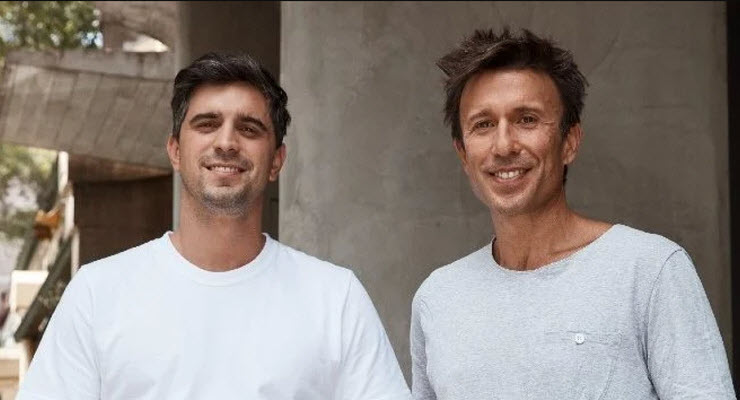
After being a frequent Afterpay critic over the past three years, yesterday’s remarkable $170 billion merger proposal with Jack Dorsey’s Square Inc came as a shock. A buy-now-pay-later (BNPL) outfit which is just seven years old and had never made a profit is being bought in an all-share deal which values the Melbourne-based ASX-listed company at $43 billion. Well played, too good.
Square Inc is a San Francisco-based digital payments outfit co-founded by Twitter CEO Dorsey in 2009 which is using its own runaway share price as currency to put together a major fintech disruptor. Heck, shares in Visa even fell 2.7% in New York last night.
The deal is breathtaking at many levels. As a start, think about the circa $5 billion in capital gains tax revenue that Canberra will pocket over time from the newly enriched Australian shareholders when they exit a business that was only founded in 2014.
Surprisingly, there were no votes of thanks or congratulations from the federal government’s ranks yesterday with Treasurer Josh Frydenberg’s office making noises about FIRB approval requirements and Senator Andrew Bragg sounding off about potential competition and consolidation concerns. As if a combined Square-Afterpay taking on Apple, PayPal, the banking cartel and the credit card giants amid a frenzy of other BNPL start-ups is going to cause ACCC or foreign investment concerns.
Afterpay’s market capitalisation got as low as $2.6 billion in March 2020, but it is now the subject of the biggest takeover in Australian history, valued at $43 billion after the Square share price surged 10.14% last night to finish at $272.38.
While critics might argue Square Inc has bought itself a growing pile of liabilities as a credit provider, American capitalism in this free money era doesn’t seem to care. It’s all about tech, brand, scale, disruption, ecosystems and the network effect, and the combined Square-Afterpay will be a formidable player in the payments and online retail markets — including with crypto-currencies.
Square went into the deal with a market capitalisation of US$112 billion and is giving Afterpay shareholders 18.5% of the company based on a conversion ratio of 0.375 Square shares for each Afterpay share.
Unlike Afterpay, Square makes genuine cash profits through its two ecosystems servicing both sides of retail transactions spanning its Seller business — which helps up to 1 million merchants process payments — and the 70 million consumers which primarily use its Cash app to make payments.
In the June quarter, Square’s revenues hit US$4.68 billion, generating a statutory profit of US$204 million. Afterpay co-founder Nicholas Molnar, Australia’s youngest self-made billionaire at 31, performed well on this 70-minute Square Inc earnings call last night in San Francisco with Dorsey and Square CFO Amrita Ahuja, a young female gun who is barely 40.
Square will take out a secondary listing on the ASX but 2021 will be the last Afterpay AGM because the deal is scheduled to close in early 2022. The Afterpay head office in Melbourne, assuming it remains open, will be little different to the Australian offices of Google, Facebook and Amazon in that it will be the Australian office of a US multinational. That’s the sad bit from an Australian corporate prestige point of view but at least the Afterpay founders didn’t sell out too early like so many others.
From a governance point of view it is good to see that both sets of shareholders get to vote, something which should become mandatory in the Australian market. There is a 1% break free worth $395 million of cold hard cash if either party walks away, but that seems highly unlikely, particularly given the initial market reaction in the US last night.
Afterpay will be given just one seat on the Square board and co-founders Anthony Eisen and Molnar have both signed up to remain with Square for an unspecified period. However, neither will join the 12-person board or even report directly to Dorsey.
On slide 22 of yesterday’s deal presentation, investors were told that “Anthony Eisen and Nick Molnar will run the respective Afterpay businesses in Cash App and Seller, led by Brian Grassadonia and Alyssa Henry”.
A quick look at the Square leadership team shows that it is far younger and more diverse than anything you would see in an ASX100 company.
With Afterpay shares soaring after the deal was announced, the two founders each own a tidy parcel of shares worth about $2.7 billion, although these will convert into limited voting A class Square Inc shares when the deal closes early in 2022.
Despite a history of organic growth rather than blockbuster acquisitions, Square will very much remain the Dorsey show as he and co-founder Jim McKelvey together control 62% of the Square Inc voting stock in a gerrymandered dual class voting structure that is common among founder-driven US tech and media companies.
The 2021 Square AGM in June even saw them vote their controlling stake to defeat two shareholder proposals — one which would see an independent chair appointed and the second which would move to a single class share structure. In shades of Murdochesque governance, the meeting lasted only 15 minutes, Dorsey barely spoke, and there were no questions from shareholders. Dorsey, 45, is a busy man as he combines being executive chairman of Square with being CEO of Twitter and even sat on the Disney board for five years until March 2018.
But will the billionaire Afterpay co-founders be able to handle life in a bigger corporate bureaucracy where they have colleagues, superiors and a board which won’t tell them everything that is going on.
Control doesn’t seem to be an issue. Once the deal settles, Molnar and his former Sydney neighbour Eisen will be free to sell all their combined $5.8 billion worth of Afterpay shares without constraint, and investors won’t be told about any sales given they won’t be Square directors.
While it is hard imagining them wanting to give Canberra about $1 billion in capital gains tax on cashing out, this extraordinary deal is really all about their exit as they have happily completely surrendered control of Afterpay to @Jack and his hand-picked team at Square Inc.








Afterpay- just another way of robbing the poor and desperate. Apparently and idea conceived in a coffee house. That’s what slave traders used to do – concoct the next raid in coffee houses.
You might be thinking of the coffee-house origins of insurance, the modern version of slavery, except that in many cases it is compulsory – rego. & mortgage being just two examples most often encountered in everyday life.
Never in the history of human hustling has so much been paid for so little by so many to so few!
You have to hand it to Eisner and Molner, anc bloody good luck to them both. You wouldn’t want to be in the tranche of saps who fatted up in there ent $150+ bracket, and there’s quite a bit of regulatory fine print to work through. APT stumps up a fortune in tax as dad public policy expertise, and Canberra lobbying firepower, and the two principles have been shedding holdings from day one. The entry of the uber-capitalised bd is into the BNPl sector was always the death knell for this ponziest of ponzi debt-fuelled dogs.
A big buy out was the only graceful exit on offer and full credit to the two chance-takers for pulling it off. But the triumph of APT is just another reminder of how (ultimately) terminally-insubstantial huge swathes of the world’s markets now are.
The crash is going to be calamitous. Three years, seven, 15…dunno, but we can’t keep magicking up real cash for a few from a debt thimbles and pea game forever.
Melbourne based ?………….hmmm…the SMH gives the impression it’s a Sydney originating company.
Melbourne seems to be a plank in the eye for Sydney based media.
The Doherty Institute is a joint RMH Melbourne University Institute but just don’t mention it either if possible.
I am amazed that its non productive assets that attracts most the money these days. It goes into financial products, realestate, Bitcoin and social media.
Really? (I mean your amazement, not your subsequent observation.)
Related is how innovative Australian companies using or leveraging technology well, can too easily fly under the radar versus media imagery of white working guys in fluro vests in related sectors.
Other examples that only appear in the business media are Atlassian (listed in US), Canva (private but eyeing NASDAQ) etc. and even health medical technology companies with a global presence ex. CSL, e.g. SHL, COH, etc. also fly under the radar.
One assumes this is not unrelated in Australian media and the politicised dismissal of science, expert analysis, university research, services etc. in favour of real estate or FIRE sector, gambling, retail, mining, resources extraction, energy and agriculture.
Weakening the structural and ethical link between material debt and any given individual’s sense of obligation and commitment to paying it is the opposite of value-adding to any stable economic framework. Afterpay and the whole BNLP landscape is one of the most accidentally subversive developments in capitalism since the credit card.
Be careful what you wish for, hotshots!